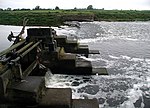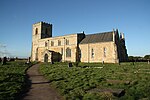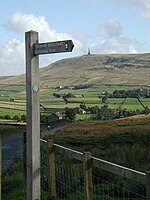Birkin
Civil parishes in North YorkshireUse British English from February 2020Villages in North Yorkshire

Birkin is a village and civil parish in the south-west of the Selby district of North Yorkshire, England. It is north of the River Aire, near Beal, North Yorkshire. The closest town is Knottingley, in West Yorkshire, 4 miles (6 km) to the south-west. The parish had a population of 146 at the 2001 census, which fell to 141 at the 2011 census. Until 1974, it was part of the West Riding district of Yorkshire.
Excerpt from the Wikipedia article Birkin (License: CC BY-SA 3.0, Authors, Images).Birkin
Haddlesey Road,
Geographical coordinates (GPS) Address Nearby Places Show on map
Geographical coordinates (GPS)
| Latitude | Longitude |
|---|---|
| N 53.73539 ° | E -1.19697 ° |
Address
Haddlesey Road
Haddlesey Road
WF11 9LS
England, United Kingdom
Open on Google Maps










